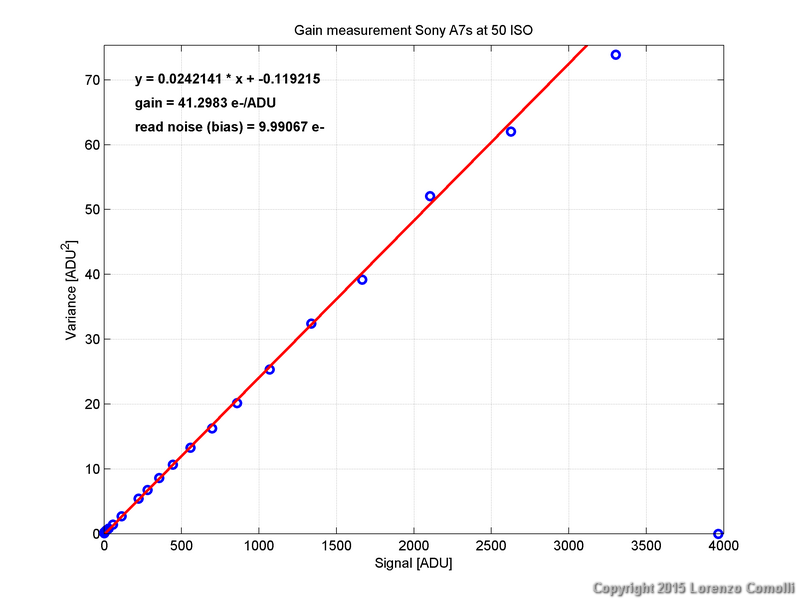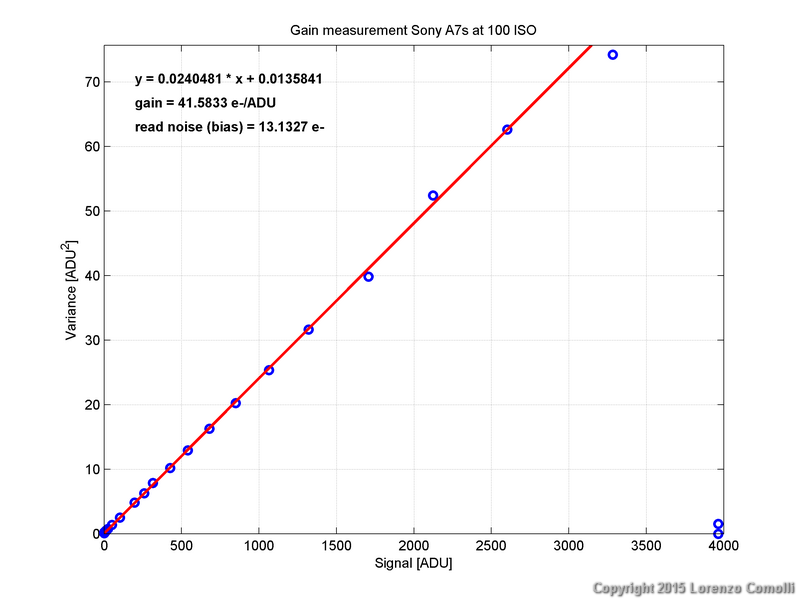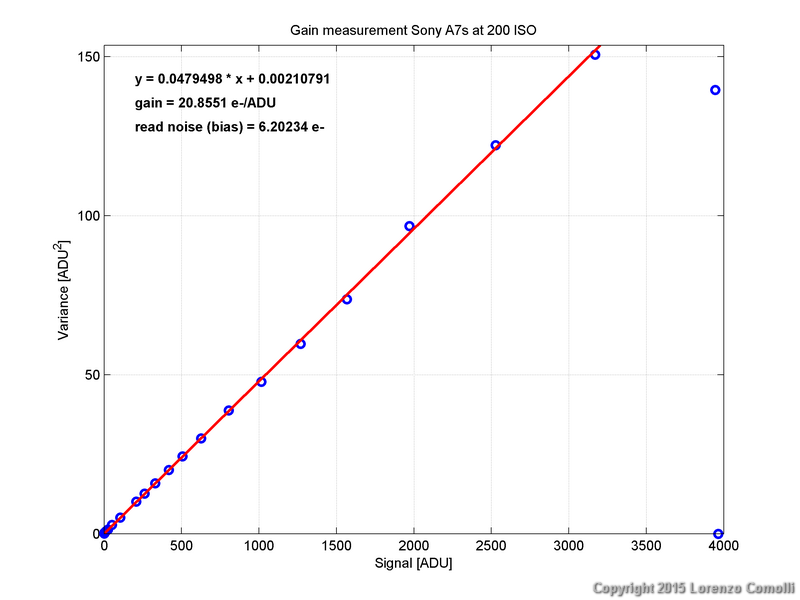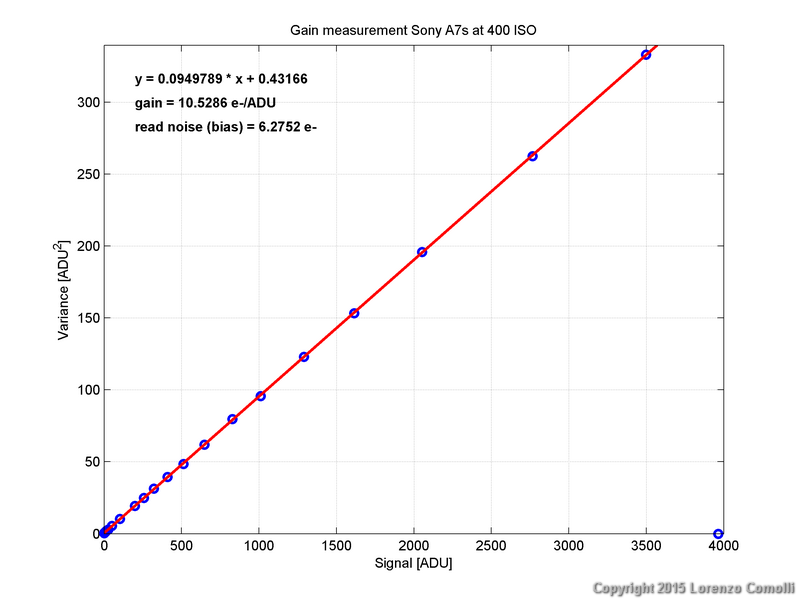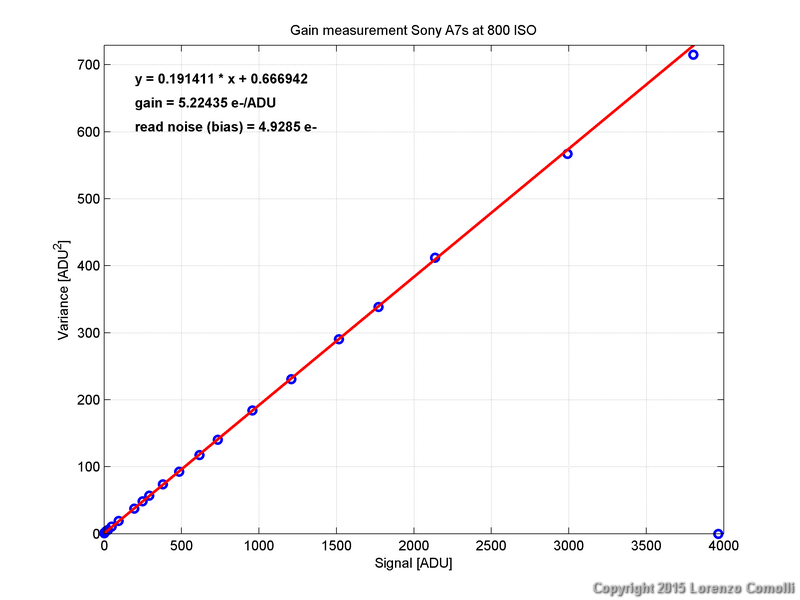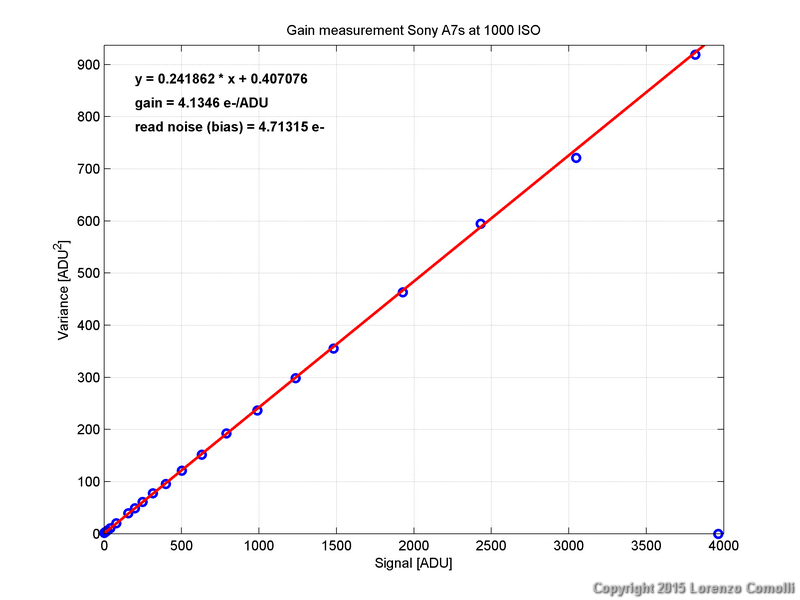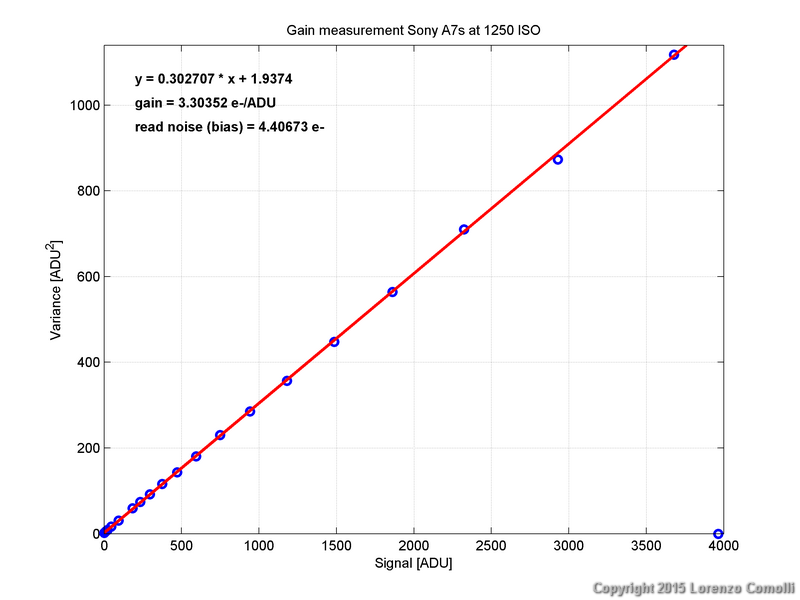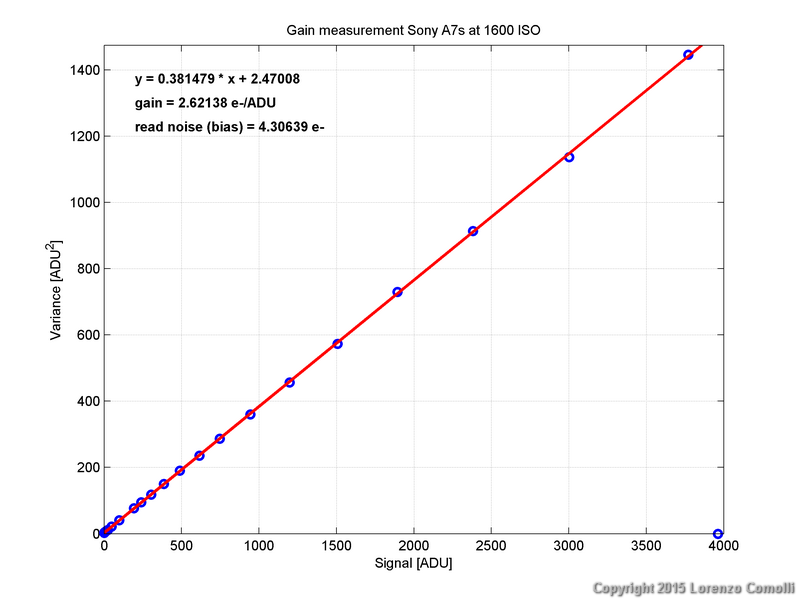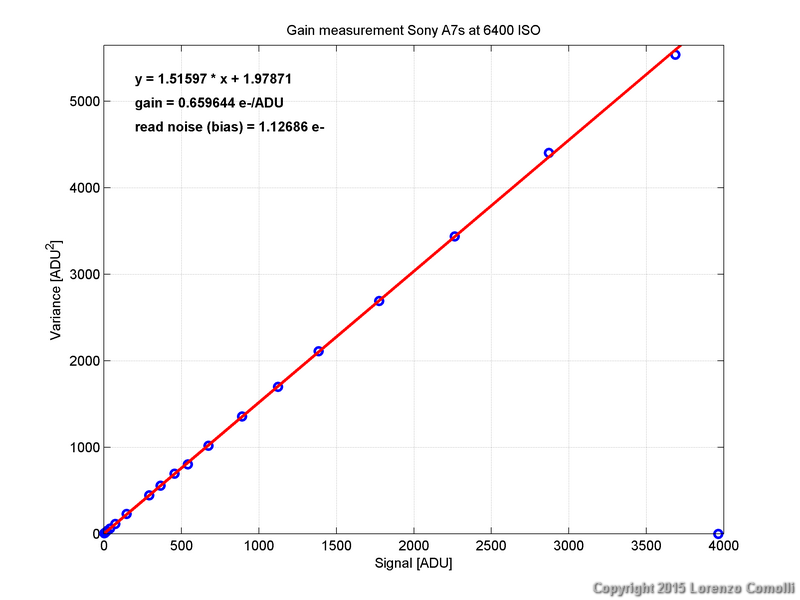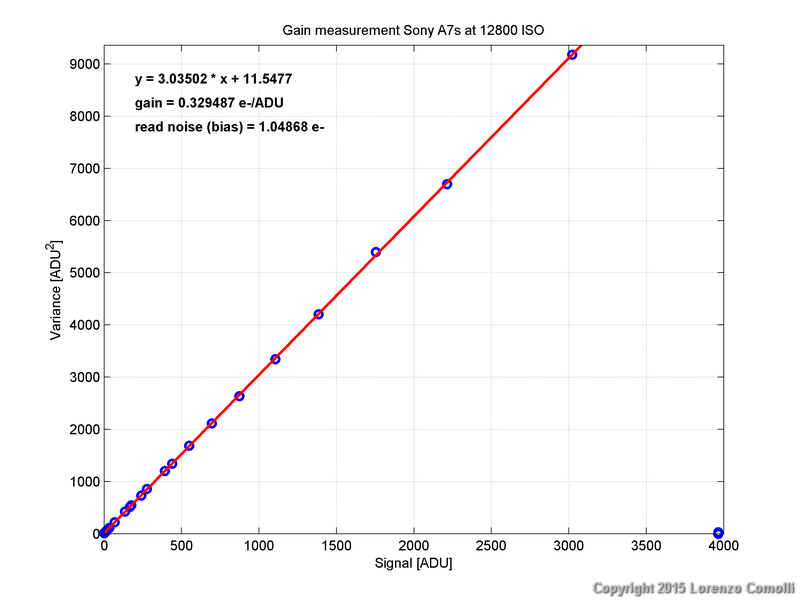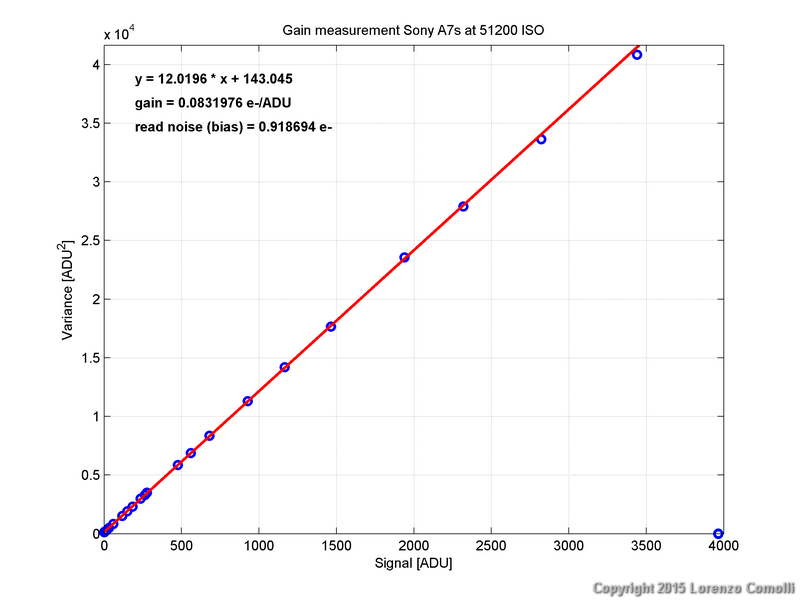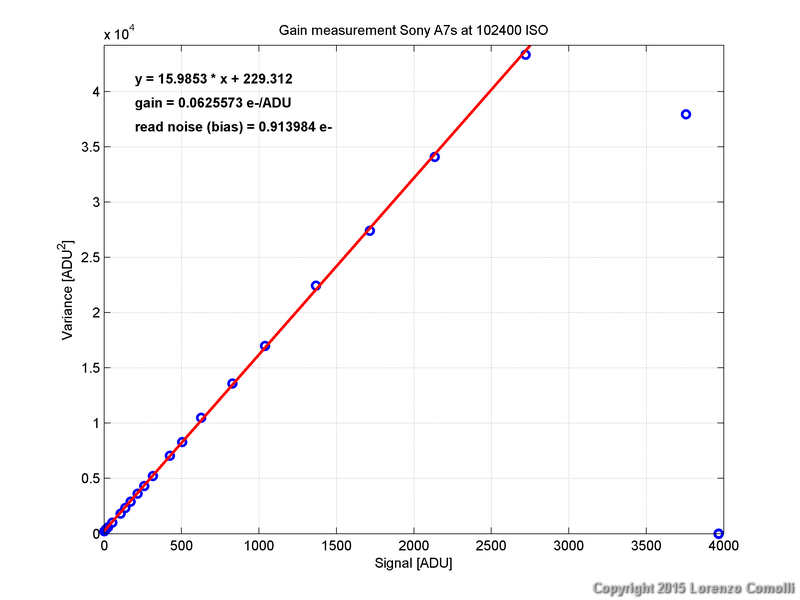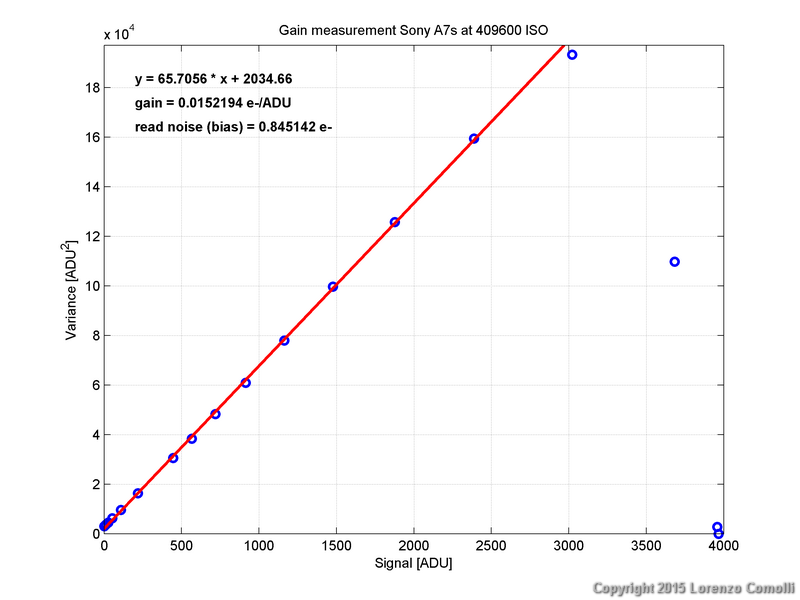|
by Lorenzo Comolli Written in June+August 2015 - Thanks to Mauro Maggioni for co-taking the test images of his camera. Thanks to Emmanuele Sordini for the English text revisions. |
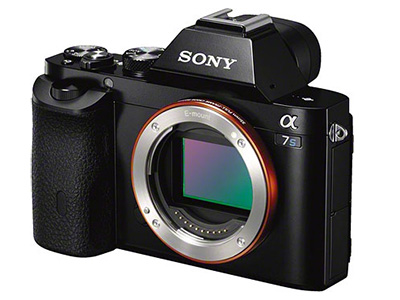
Introduction
In this page you'll find a technical test. Please refer here for an introduction, details and testing method.
Available sensitivities:
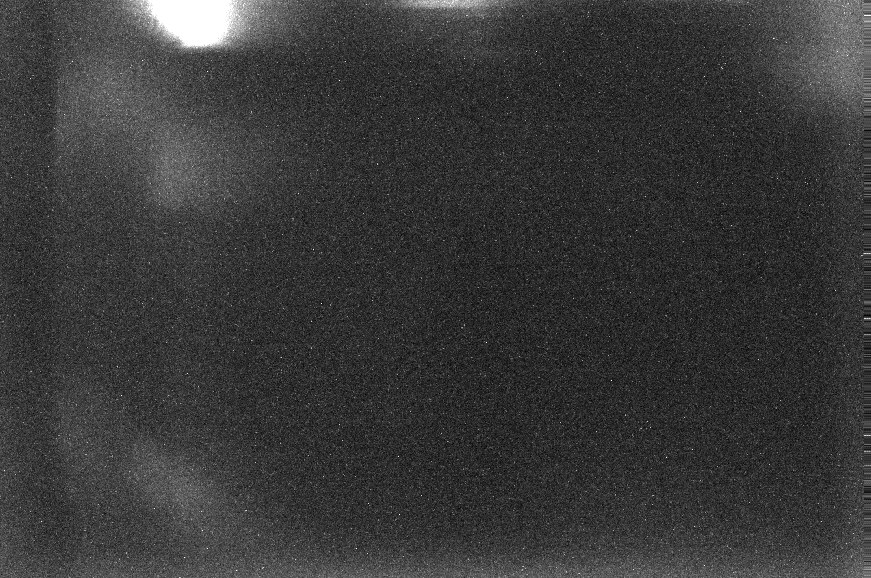
Example of electroluminescence in a 60 s dark frame at 5000 ISO.
True sensitivities
A way to distinguish between true and software-interpolated sensitivities is to look at the histogram of a nearly uniform image (like a flat field). If, however, a nonlinear compression of the histogram is applied to the raw files, then it becomes difficult to understand what is really true. That's why it is useful to look at bias data (not shown here), where the raw compression is not applied because of low ADU values. Therefore:
In this page you'll find a technical test. Please refer here for an introduction, details and testing method.
Available sensitivities:
- standard: from 100 to 409600 ISO with 1/3 EV steps
- extended: 50 ISO
-
Gain. The gains measured
follow quite accurately the power law, except, although to a minor extent, for sensitivity>=102400 ISO. And of course 50 ISO setting does not follow the linear
trend because it is exactly identical to the 100 ISO one.
- Unity gain at 4529 ISO (by far the highest I've tested up to now!)
- Read noise. Noise
decreases with increasing ISO, but the curve profile is not as gradual
as one would expect.
In particular a huge drop in the noise curve is observed between 1600
and 3200 ISO, with a 3x decrease. This behavior is quite strange and
according to Jim Kasson
it is due to the conversion gain capacitance in the amplification
system.
Above this level the noise continue to decrease, even if at
sensitivities>51200 ISO the read noise remains nearly constant and no
noticeable
improvement is obtained by increasing the sensitivity. Anyway in
absolute terms
these values are IMPRESSIVELY good and seem to confirm that the A7s is
the BEST astrophotography camera ever (as of September 2015) (except for electroluminescence and raw compression, see below). A note about black level clipping:
with sensitivity>25600 ISO the foot of the histogram gets clipped because the
standard deviation of noise exceeds the offset (128 ADU), so this may lead to unreliable read noise measurements. Therefore, I would advise against using sensitivities above 25600-51200 ISO in raw mode,
because this will reduce dynamic range without any noticeable
improvement in the dark areas. In JPG mode or VIDEO mode, higher ISO
settings may still produce some improvements. Therefore, for best results
in
extremely low-light scenes, I would recommend using 25600 to 51200 ISO; otherwise anything
between 3200 and 12800 ISO is good for e.g. timelapses or auroras.
- Dynamic range. The dynamic range is computed taking into account the actual saturation level for each ISO setting. As shown both in the table and the charts below, the best dynamic range is obtained at 100 and 200 ISO, while higher ISO values show noticeably smaller dynamic range. The 50 ISO sensitivity appears to have better DR, but, since the gain is exactly the same as that for 100 ISO sensitivity, this improvement is only apparent; my guess is that some noise reduction may be applied on the raw data. The absolute value of the dynamic range at 200 ISO is impressive: 82.5 dB, or 13.7 EV. This is noticeably higher than any other camera I've tested before. For best results in bright scenes, use 100 or 200 ISO.
- 1/3 stop sensitivities. 1/3
stop sensitivities do not seem to produce artifacts in the histograms,
and this can be a sign that these ISO settings are obtained with the
ADC
converter and not digitally as in the majority of the cameras I've
tested. However since the raw data is bit-compressed (see below), it is
not easy to prove this. Therefore I think all ISO settings can be used, including 1/3 stop values.
- Histograms. Light frames
at all ISO values show big gaps in their histograms. Raw values are "bit-compressed", so they are not true raw.
Here is the bit compression algorithm:
- from 0 to 800 ADU no compression (12 bit),
- from 800 to 1425 ADU take only every second value (11 bit),
- from 1425 to 2025 ADU take only every fourth value (10 bit),
- from 2025 to 4101 ADU take only every eight value (9 bit).
So a total of 1522 values are possible instead of 4096. This kind of dynamic range compression is common in some cameras such as the Sony NEX-6 and Sony A6000; it is indeed a clever way of compressing data, but in this way some of the original data is lost. In my opinion the raw file should be exactly this: RAW. If I need compression, I would select JPG or "small" raw formats. Bottom line: cameras not producing a true raw format should not be considered for serious astronomical work. - Other notes. A big problem of this camera sensor is electroluminescence,
as can be seen in the dark frame below. This issue is really a problem
in astronomical imaging because it cannot be completely removed with
dark frame calibration, since the amount of the correction depends on
the temperature of the sensor at which the dark frame was taken; trouble
is, the temperature in DSLR cameras is not
controlled by a thermostat like in astronomical CCDs. The same problem
was present in first-generation Canon cameras (such as the 350D or the
5D), but it
was solved after 2007; so I just can't believe it still affects a 2014
Sony model intended for low light
work!

Example of electroluminescence in a 60 s dark frame at 5000 ISO.
True sensitivities
A way to distinguish between true and software-interpolated sensitivities is to look at the histogram of a nearly uniform image (like a flat field). If, however, a nonlinear compression of the histogram is applied to the raw files, then it becomes difficult to understand what is really true. That's why it is useful to look at bias data (not shown here), where the raw compression is not applied because of low ADU values. Therefore:
- values from 100 ISO up to 409200 ISO, including 1/3 stop intermediates values, are true sensitivities.
- 50 ISO is exactly the same as 100 ISO.
| ISO | gain | read noise | dynamic range |
| [e-/ADU] | [e-] | [dB or 6*EV] |
|
| 50 |
41.30 |
9.99 |
(84.3) |
| 100 | 41.58 |
13.13 |
82.0 |
| 200 | 20.86 |
6.20 | 82.5 |
| 400 | 10.53 |
6.28 | 76.5 |
| 800 | 5.22 |
4.93 | 72.5 |
| 1000 |
4.13 |
4.71 |
70.8 |
| 1250 |
3.30 |
4.41 |
69.5 |
| 1600 | 2.62 |
4.31 | 67.6 |
| 3200 | 1.32 |
1.28 | 72.2 |
| 6400 | 0.660 |
1.13 | 67.3 |
| 12800 | 0.329 |
1.05 | 61.9 |
| 25600 | 0.167 |
1.01 | 56.3 |
| 51200 |
0.083 |
0.92 |
51.1 |
| 102400 |
0.063 |
0.91 |
48.7 |
| 204800 |
0.031 |
0.86 |
43.0 |
| 409200 |
0.015 |
0.85 |
37.1 |
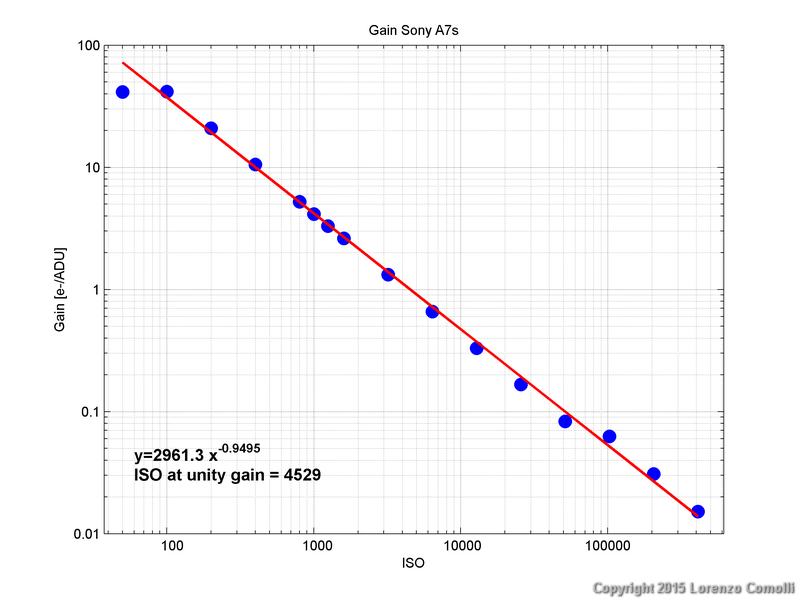

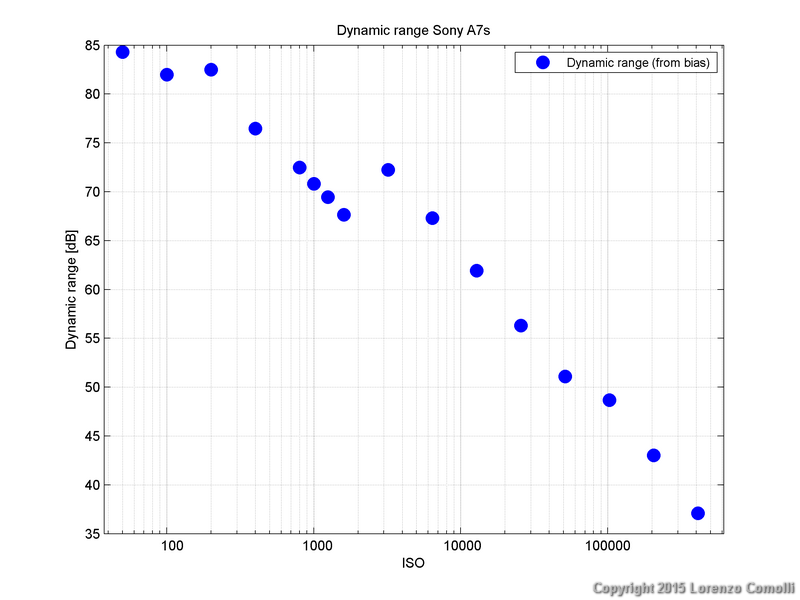
Histograms
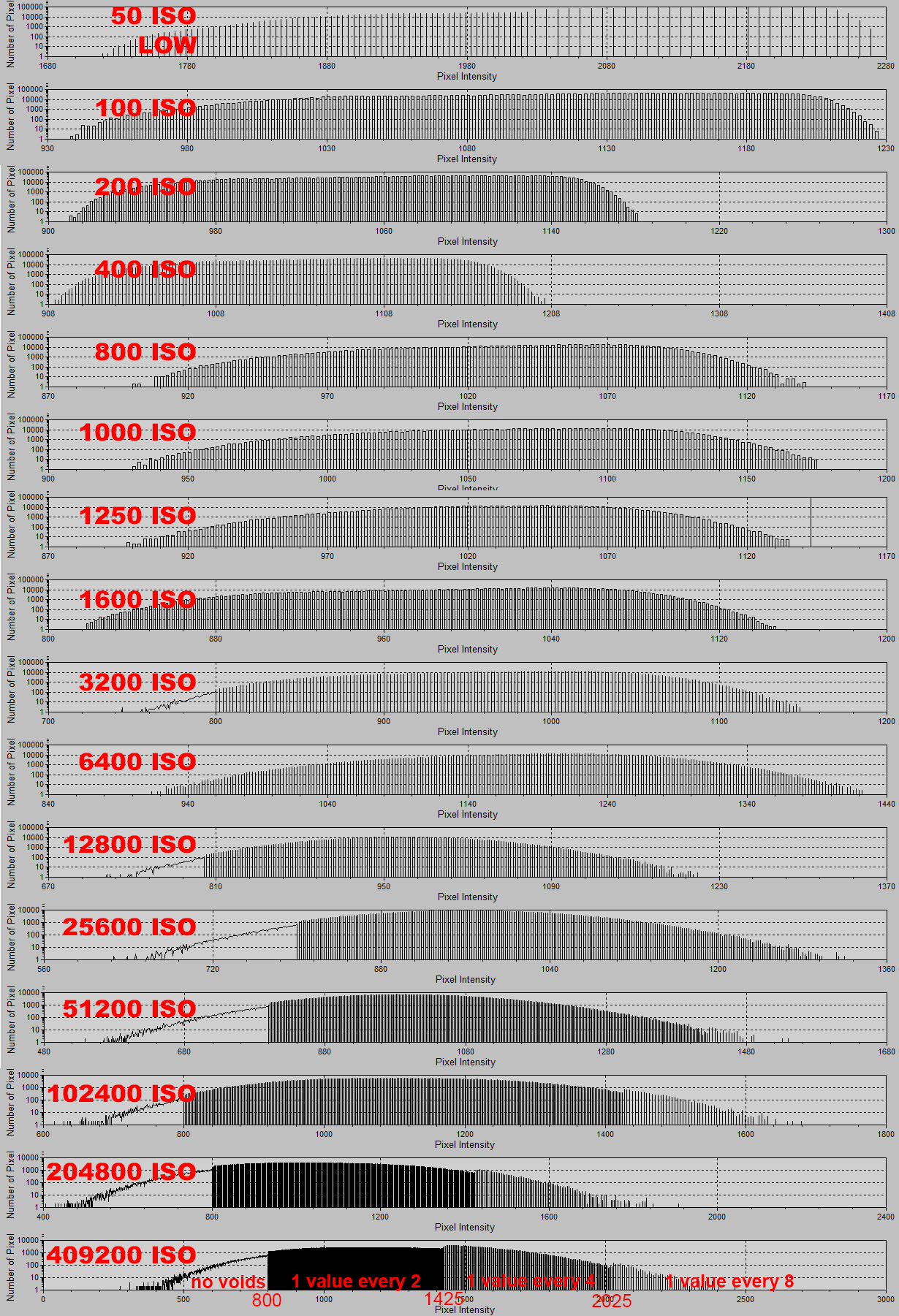
Details of measurements at each ISO setting
